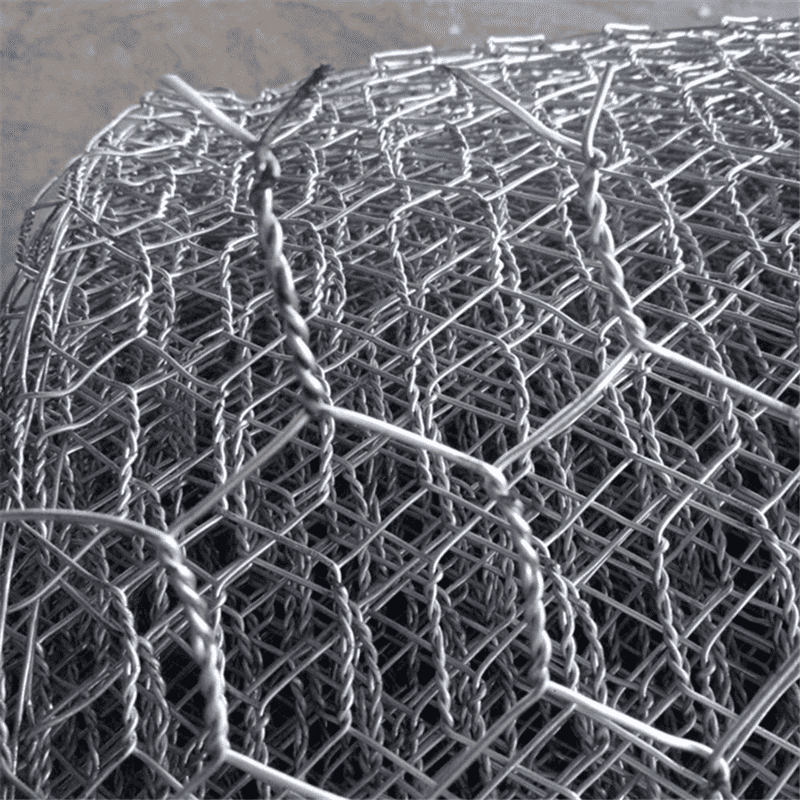
Dec . 24, 2024 19:59 Back to list
Wire Mesh Retaining Wall Design and Applications for Effective Soil Retention
Wire Cage Retaining Walls A Sustainable Solution for Erosion Control
In the realm of civil engineering and landscape architecture, retaining walls play a crucial role in controlling soil erosion and managing slopes. Among the various types of retaining walls, wire cage retaining walls, also known as gabion walls, have garnered attention for their versatility, aesthetic appeal, and environmental benefits. This article delves into the characteristics, construction, advantages, and applications of wire cage retaining walls.
Understanding Wire Cage Retaining Walls
Wire cage retaining walls consist of large, rectangular steel wire mesh filled with stones or rocks. These cages, or gabions, are typically stacked to create a solid, yet flexible, structure capable of withstanding lateral earth pressures. The design allows for a porous system that promotes natural drainage, reducing hydrostatic pressure and minimizing the risk of failure.
The construction of wire cage retaining walls is relatively straightforward. First, a level foundation is prepared, ensuring stability. Next, the wire cages are assembled and filled with locally-sourced stones, which can often be obtained from the site itself. This not only reduces transport costs but also enhances the wall's integration with the surrounding environment. Once stacked to the desired height, the wall is secured, often requiring additional measures like anchoring or backfilling, especially in areas with high loads.
Advantages of Wire Cage Retaining Walls
One of the primary benefits of wire cage retaining walls is their environmental sustainability. The use of natural materials, such as stone, not only minimizes the carbon footprint associated with transportation but also allows for a better aesthetic fit in natural landscapes. Over time, vegetation may grow between the stones, further enhancing the wall's integration into the ecosystem.
Moreover, gabion walls are highly adaptable to various site conditions and can be engineered to serve different purposes, from stabilizing slopes to protecting riverbanks against erosion. Their flexible structure allows them to move slightly under load, which is beneficial in areas with shifting soils or seismic activity. Unlike traditional concrete walls, which can crack and fail under stress, wire cage walls tend to maintain their integrity by redistributing forces.
wire cage retaining wall

Additionally, wire cage retaining walls offer excellent drainage capabilities. The porous nature of the cages allows water to flow through, alleviating pressure that can build up behind solid walls. This feature substantially reduces the risk of water-related problems, such as hydrostatic pressure and subsequent wall failure, making them a reliable choice in flood-prone regions.
Applications and Case Studies
Wire cage retaining walls have a multitude of applications in civil engineering. They are commonly used for road and railway embankments, hillside stabilization, erosion control along riverbanks, and even for decorative landscaping features. Many urban areas have integrated gabion walls into their design to create green spaces that are both functional and visually appealing.
One notable example of their application is in the stabilization of coastal regions. Many countries facing the challenges of rising sea levels and increasing storm frequency have turned to gabion walls as a means of protecting shorelines. Their ability to absorb and dissipate wave energy significantly reduces erosion rates and protects infrastructure.
Another interesting use of wire cage retaining walls is in the creation of terraced gardens. In areas with steep inclines, gabion walls can serve as retaining structures that facilitate the development of multi-level gardens, enhancing agricultural productivity while preventing soil erosion.
Conclusion
Wire cage retaining walls represent a forward-thinking solution to address the pressing issue of soil erosion and slope stabilization. Their combination of sustainability, adaptability, and excellent drainage properties makes them an attractive alternative to conventional retaining wall systems. As society moves towards more sustainable practices in construction and landscaping, the popularity and applications of wire cage retaining walls are likely to continue to grow, paving the way for resilient designs that respect and enhance natural environments. Whether in urban settings or rural landscapes, gabion walls are not only effective; they are a testament to the harmony that can exist between engineering and nature.
-
Why a Chain Link Fence is the Right Choice
NewsJul.09,2025
-
Upgrade Your Fencing with High-Quality Coated Chicken Wire
NewsJul.09,2025
-
The Power of Fence Post Spikes
NewsJul.09,2025
-
The Best Pet Enclosures for Every Need
NewsJul.09,2025
-
Secure Your Property with Premium Barbed Wire Solutions
NewsJul.09,2025
-
Enhance Your Construction Projects with Quality Gabion Boxes
NewsJul.09,2025
Products categories











